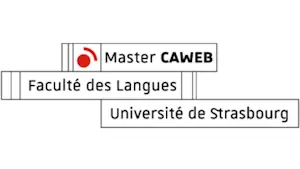Understanding the Difference Between UX Design and UI Design

Let’s be honest. We’ve all wondered about the difference between UX and UI, whether they are synonymous or how they relate to each other. Despite using these terms daily, many struggle to distinguish between these two disciplines.
But fear not! In this article, we’ll put an end to all these doubts once and for all by clarifying the definition of each of these concepts and then discussing their relationship.

What is UX Design?
UX design, or User Experience design, is a distinct category of graphic design that aims to create digital interfaces providing an optimal and satisfying user experience. It is applicable to desktops, smartphones, tablets, and other connected devices. UX is a design discipline that encompasses ergonomics and user journey. We’ve already touched on the subject in our article “Why is UX design important for a website?“. Ergonomics ensures a visually structured and organized interface with a logical and coherent information architecture. Creating a user journey map involves a deep understanding of user needs and behaviors. Human-centered design is central to UX design: they conduct research and tests to comprehend user expectations, motivations, and preferences.
In essence, the tasks of UX design include:
- Defining the design strategy.
- Analyzing user needs and behaviors.
- Creating mockups and prototypes.
- Conducting user tests.
- Designing navigation and information architecture.
For a good user experience, four pillars are distinguished:
- Clarity: The user should always know where they are and quickly find what they are looking for.
- Simplicity: Gather information in a simple and effective manner.
- Intelligence: Respect the three-click rule—users should access information logically and effortlessly.
- Cooperation: Assist the user throughout their journey by providing help at each step.
An interface is considered successful if it meets these four criteria: easy to use, effective, pleasant to use, and aligns with user expectations. Find out more in our article on 7 UX Principles for Creating a Great Website!
What is UI Design?
Generically, UI, or User Interface design, is defined as all the visible elements of a site’s UX. This includes colors, typography, visual elements, etc. UI design aims to create effective and aesthetic user interfaces for digital platforms. This discipline focuses on creating visually and interactively consistent elements of the user interface, such as buttons, menus, icons, colors, and typography.
To achieve this, UI designers focus on three aspects:
- Visual hierarchy
- Typography
- Composition
The tasks of a UI designer include:
- Creating mockups and prototypes of the user interface.
- Designing visual and interactive elements of the user interface.
- Defining the layout grid and visual hierarchy.
A UI design is considered good if it is consistent, clear, easy to use, attractive, user-friendly, and, above all, enables users to perform tasks effectively and enjoyably.
What is the Difference Between UX and UI Design?
Until now, one might have believed that UX and UI are entirely different. However, we now understand that UI is, in fact, a component or stage of UX. Let’s illustrate this with a well-known example: the iceberg. The visible surface of the iceberg represents UI, the visual component of the interface, which is only a small part of the larger entity that is UX.

UX and UI design are therefore two different but complementary disciplines within the field of user interface design.
- UX design focuses on creating optimal user experiences for digital interfaces, considering the entire user journey. The UX designer works to understand user needs and behaviors, establish usage scenarios and workflows, create mockups and prototypes, and conduct user tests to ensure the final product meets user expectations.
- UI design, on the other hand, focuses on designing the visual and interactive elements of the user interface, such as buttons, menus, icons, colors, and typography. The UI designer works to create a consistent, clear, and aesthetic user interface.
In summary:
- UX design focuses on creating optimal user experiences for digital interfaces, while UI design concentrates on designing the visual and interactive elements of the user interface. Both disciplines are complementary and essential for creating successful digital interfaces and can sometimes be combined into a single role for small teams or low-budget projects.
Article written in french by Lommatzsch Cynthia, translated in english by Juric Mélisande






